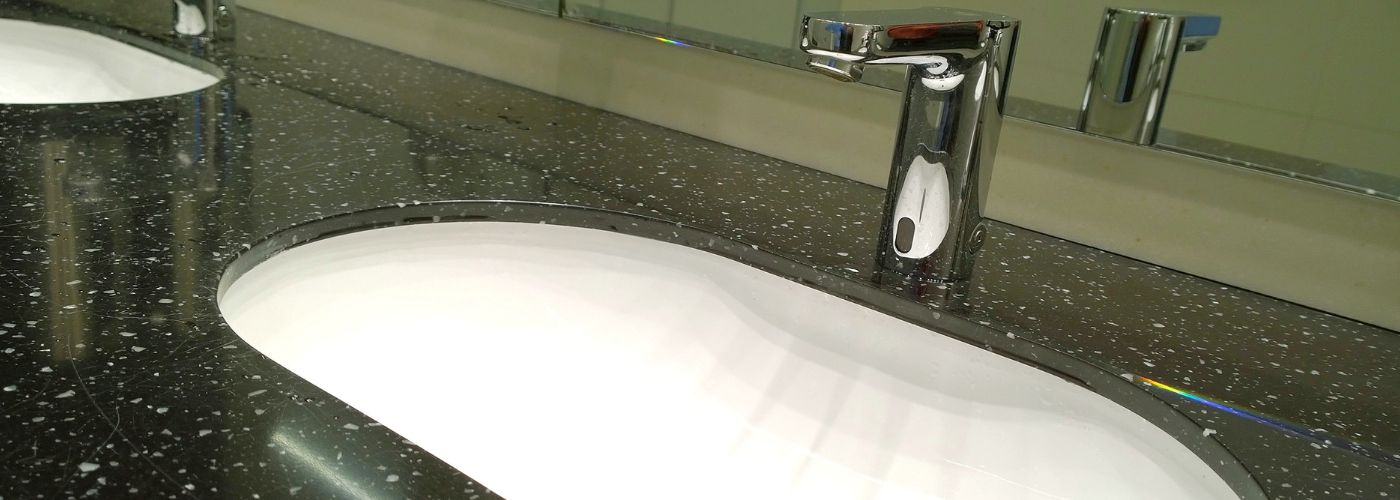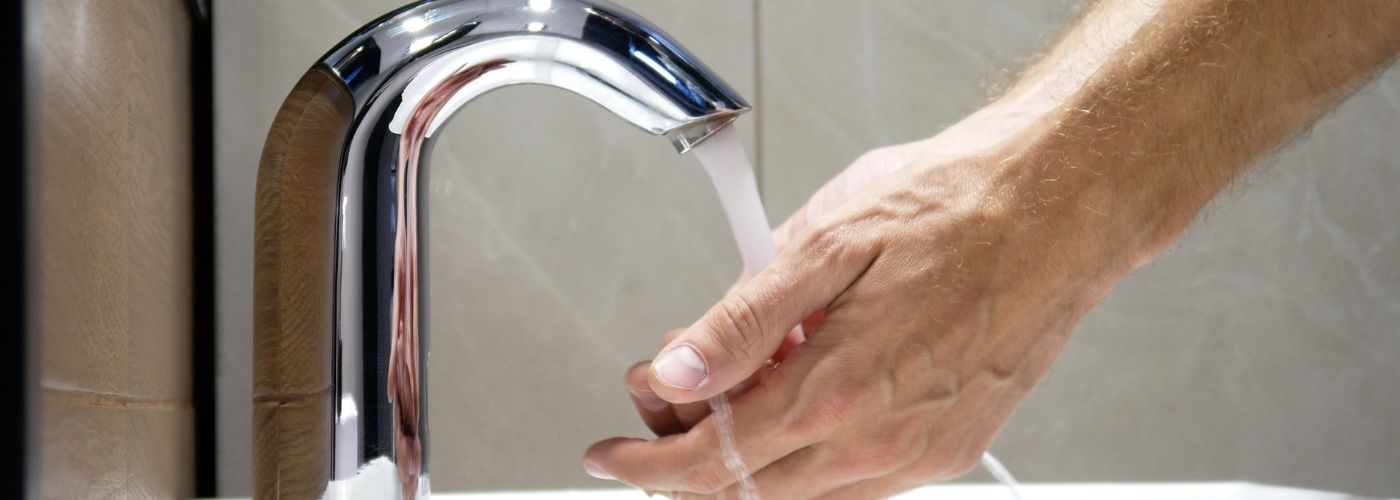If you’ve ever used a touchless faucet in a public restroom, you know just how convenient and futuristic they can feel. But are touchless faucets worth it for your home? How do they work, and do they need electricity to function? Can you still use them manually when needed?
In this guide, we’ll explore these questions and more to help you make an informed decision about whether touchless faucets are the right choice for your kitchen or bathroom.
How Do Touchless Faucets Work?

Touchless faucets, also known as sensor faucets or automatic faucets, are a technological advancement that offers both convenience and hygiene for your kitchen or bathroom remodel. They operate based on sensors, typically infrared sensors, that detect the presence of a hand or object in front of the faucet. Here’s how they work:
Infrared Sensors: The heart of a sensor faucet is the infrared sensor located near the spout. When you place your hands beneath the spout, the sensor sends out an infrared beam.
Hand Detection: If the sensor detects an object within its range, it triggers the faucet to open the water valve. This means the water starts flowing without you having to touch any handles or levers.
Water Flow Control: Most automatic faucets allow you to control the water flow and temperature by adjusting the handle or lever manually, but the initial activation is hands-free.
Auto Shutoff: To conserve water, these faucets often have a built-in auto shutoff feature. After a certain period of inactivity, the faucet will automatically turn off.
Are Touchless Faucets Worth It?
Touchless faucets offer several advantages that can make them worth the investment for your home:
Hygiene: One of the primary benefits of these faucets is their hygiene factor. Since you don’t need to touch any handles, they can help reduce the spread of germs and bacteria. This is especially important in high-traffic areas and makes for great upgrade options for your bathroom or kitchen sink.
Convenience: The hands-free operation is incredibly convenient. It’s perfect for times when your hands are dirty or when you need to fill a pot or container that you’re holding.
Water Conservation: Many automatic faucets come with built-in water-saving features, such as automatic shutoff. This can help reduce water wastage and lower your utility bills!
Modern Aesthetics: Sensor faucets have a sleek and contemporary appearance, adding a touch of modernity to your kitchen or bathroom.
Longevity: Touchless faucets are built to last and are often more durable than traditional faucets, reducing the need for frequent replacements.
Accessibility: Automatic faucets are also a great option for individuals with limited mobility, as they can be easier to operate!
Do Touchless Faucets Need Electricity?
Yes, touchless faucets require electricity to operate. The sensors that detect your hand or object rely on a power source to function. There are two primary ways to provide electricity to touchless faucets:
Battery-Powered: Many touchless faucets are powered by batteries, typically AA or AAA batteries. These batteries need to be replaced periodically, depending on your faucet’s usage. Battery-powered touchless faucets are straightforward to install and operate.
Hardwired: Some sensor faucets are designed to be hardwired into your home’s electrical system. This eliminates the need for batteries but may require professional installation. Hardwired faucets are typically found in commercial settings or in homes with the necessary electrical infrastructure. A qualified contractor may be able to install a hardwired faucet during your bathroom or kitchen remodel.
When choosing a touchless faucet, consider your preference and the convenience of your home’s electrical setup. Battery-powered faucets are suitable for most residential applications, while hardwired options are often more common in commercial environments.
Can A Touchless Faucet Work Manually?
Yes, sensor faucets can still be operated manually! While the primary function is hands-free, you can manually adjust the water flow and temperature using the faucet’s handle or lever. This flexibility ensures that you have complete control over your water usage and can use the faucet in the traditional way when desired.
Touchless faucets are a fantastic addition to your home, offering convenience, hygiene, and water-saving benefits. When considering a touchless faucet for your kitchen or bathroom, evaluate your budget, compatibility, and preferences to make an informed decision. With their modern aesthetics and smart functionality, touchless faucets can enhance your home’s overall look and functionality, making everyday tasks just a little bit easier and more enjoyable!

How to Love Your Home Again
Sometimes we can feel uninspired and tiresome with the home we once loved so dearly.
Jan
Affordable Ways to Glamorize Your Home
There are many affordable ways to glamorize your home; elka Interiors & Construction is here
Jan
How to Stage Your Bathroom to Add Appeal
Home staging is a great way to incorporate an added sense of luxury and increase
Jan